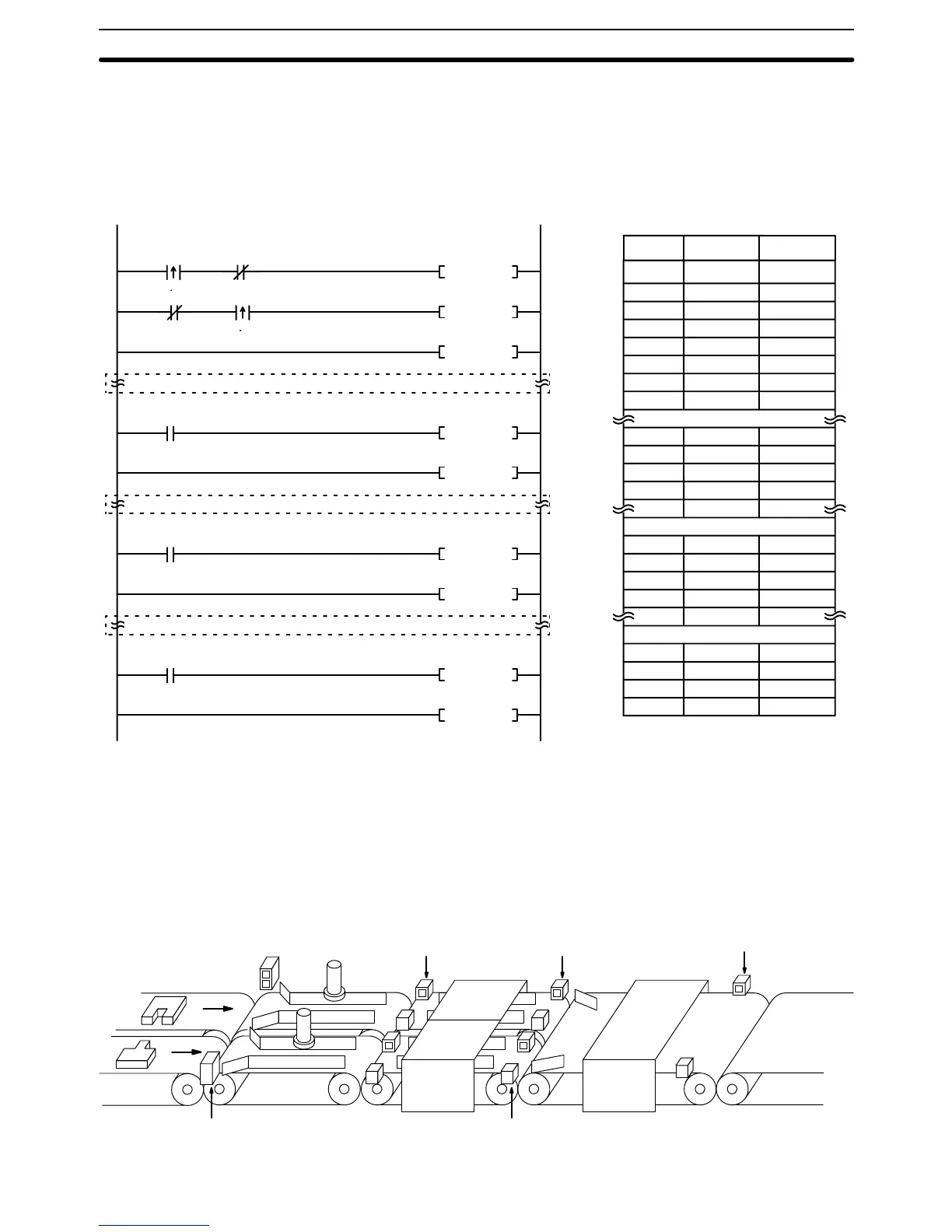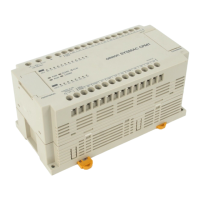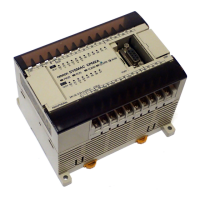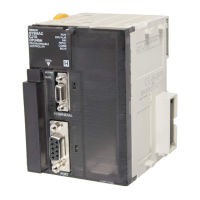374
The program for this process, shown below, starts with two SNXT(009) instruc-
tions that start processes A and B. Because of the way CIO 000001 (SW A1) and
CIO 000002 (SW B1) are programmed, only one of these will be executed with
an ON execution condition to start either process A or process B. Both of the
steps for these processes end with a SNXT(009) that starts the step (process C).
Process
A started.
Process
A reset.
Process
B started.
Process
B reset.
Process
C started.
Process
C reset.
0000
01(SW A1)
0000
03(SW A2)
0000
04(SW B2)
0000
05(SW D)
0000
02(SW B1)
0000
02(SW B1)
0000
01(SW A1)
(009)
SNXT 010000
(009)
SNXT 010001
(009)
SNXT 010002
(008)
STEP 010001
(009)
SNXT 010002
(008)
STEP 010002
(009)
SNXT 024614
(008)
STEP
(008)
STEP 010000
Programming for process A
Programming for process B
Programming for process C
00000 jLD 000001
00001 AND NOT 000002
00002 SNXT(009) 010000
00003 LD NOT 000001
00004 jAND 000002
00005 SNXT(009) 010001
00006 STEP(008) 010000
Process A
00100 LD 000003
00101 SNXT(009) 010002
00102 STEP(008) 010001
Process B
00100 LD 000004
00101 SNXT(009) 010002
00102 STEP(008) 010002
Process C
00200 LD 000005
00201 SNXT(009) 024614
00202 STEP(008) ---
Address Instruction Operands
Note In the above programming, CIO 010002 is used in two
SNXT(0009) instructions. This will not produce a duplica-
tion error during the program check.
The following process requires that two parts of a product pass simultaneously
through two processes each before they are joined together in a fifth process.
Various sensors are positioned to signal when processes are to start and end.
Process C
SW1
SW2
Process A
SW3
SW4
Process D
Process B
Process E
SW6
SW5 SW7
Example 3:
Parallel Execution
STEP DEFINE and STEP START: STEP(008)/SNXT(009) Section 5-29

